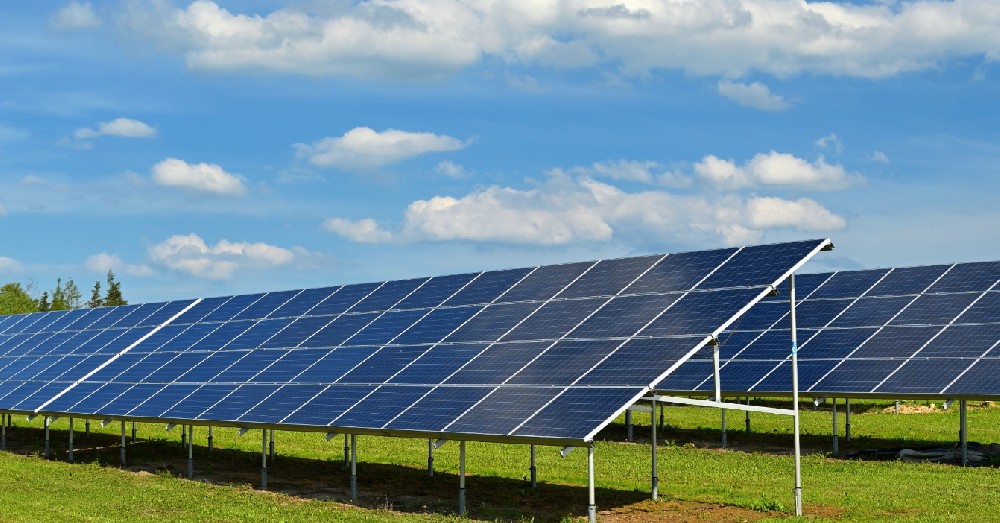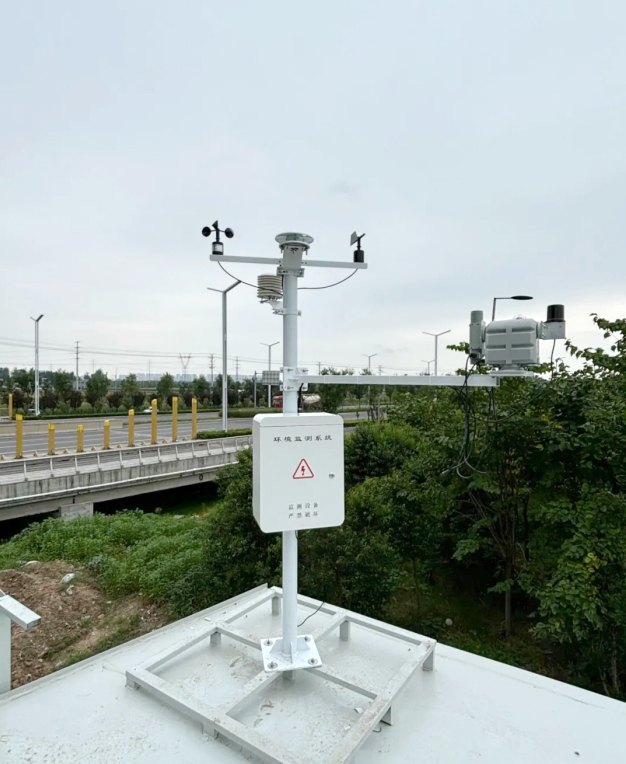

— Blogs —
—Products—
 Consumer hotline +8618073152920
Consumer hotline +8618073152920 WhatsApp:+8615367865107
Address:Room 102, District D, Houhu Industrial Park, Yuelu District, Changsha City, Hunan Province, China
Product knowledge
Time:2025-04-03 13:58:58 Popularity:99
With the growing global demand for clean energy, photovoltaic (PV) solar power is rapidly becoming a core pillar in the renewable energy sector. However, the efficiency and stability of PV power plants are highly dependent on meteorological conditions such as solar radiation, temperature, wind speed, and humidity. To optimize plant performance and increase energy output, photovoltaic power plant meteorological stations have emerged. These intelligent devices provide crucial support for the operation, management, and future development of solar power systems through precise monitoring and data analysis. This article will detail the definition, functions, value applications, and unique advantages of small-scale meteorological stations.

A photovoltaic power plant meteorological station is a high-precision monitoring system specifically designed for solar power generation. It integrates various sensors to collect real-time meteorological data that affect the efficiency of power generation. These data include environmental temperature, humidity, wind speed, wind direction, atmospheric pressure, and key solar radiation indicators—such as total irradiance, horizontal irradiance, direct radiation, and diffuse radiation. Additionally, some models also monitor the temperature of the backsheets of photovoltaic modules to comprehensively assess system performance.
These devices typically feature automated functions, transmitting data to the cloud or local platforms via wireless technology, allowing users to access the information anytime, anywhere. Whether for large ground-mounted plants or small distributed systems, photovoltaic power plant meteorological stations provide customized monitoring solutions to ensure high data reliability.

Thanks to advanced technologies and intelligent designs, photovoltaic power plant meteorological stations offer several practical functions:
Using high-precision sensors, the meteorological station continuously tracks multiple parameters. For example, solar radiation sensors measure light intensity, temperature and humidity sensors assess environmental conditions, and wind speed and direction instruments detect air movement. This data forms the basis for plant performance analysis and power generation forecasting.
Some small-scale meteorological stations are equipped with fully automated solar tracking systems, which use sensors to detect changes in the sun's position in real-time. This technology ensures that photovoltaic panels are always aligned with the optimal light direction, significantly improving radiation reception efficiency.
When extreme weather conditions (such as strong winds, high temperatures, or sandstorms) are detected, the meteorological station will automatically issue alerts, prompting maintenance personnel to take protective measures. At the same time, long-term data analysis reveals the relationship between weather and power generation efficiency, providing a basis for optimization strategies.
With high-strength poles and waterproof materials, the meteorological station can withstand harsh weather conditions like heavy rain, strong winds, or snow, ensuring the device operates reliably in outdoor environments. Many models also use solar power with maintenance-free batteries, further enhancing reliability.
Photovoltaic power plant meteorological stations bring significant benefits to the solar energy industry at multiple levels:
Real-time data helps managers adjust the angle of photovoltaic panels, plan cleaning times, or optimize operating modes. For example, when radiation intensity decreases or dust accumulates, the system can prompt timely cleaning to maximize energy capture.
By monitoring module temperature and environmental conditions, the meteorological station can quickly detect anomalies, such as overheating or dust accumulation, preventing potential faults. This not only reduces downtime but also extends equipment lifespan.
Intelligent alerts and predictive maintenance reduce the need for emergency repairs. For instance, detecting high temperatures in advance can trigger cooling measures to prevent equipment damage, saving additional costs.
Long-term data records provide valuable resources for researching solar technologies and assessing the impact of climate change, while also offering insights for optimizing new plant siting and design.
By enhancing the efficiency and stability of photovoltaic systems, meteorological stations indirectly promote the widespread adoption of clean energy, contributing to the global carbon neutrality goals.

Small-scale photovoltaic power plant meteorological stations are designed for flexibility and efficiency, particularly suitable for medium and small projects or remote areas. Here are their highlights:
Their compact size and high-strength poles make them easy to transport and deploy without complex infrastructure, allowing installation in just a few minutes.
Despite their small size, these stations can monitor wind speed, wind direction, temperature, humidity, atmospheric pressure, solar radiation, and even module temperature, providing complete data support for the power plant.
The fully automated tracking system combines sensors and GPS technology to ensure photovoltaic panels receive optimal sunlight at all times, significantly improving power generation efficiency. Compared to manual adjustments, this reduces human error and maintenance costs.
The high-strength poles resist natural corrosion, and the solar-powered system with batteries supports continuous operation, even in areas without a power grid.

The core of photovoltaic generation is the sun, and weather is its most significant variable. Cloud cover can reduce radiation, high temperatures can lower module efficiency, and strong winds can threaten equipment safety. Photovoltaic power plant meteorological stations help managers turn passive responses into proactive ones by continuously monitoring these factors:
- Optimize Decision Making: Data guides when to clean or adjust equipment, avoiding resource wastage.
- Protect Assets: Early warnings for extreme weather prevent equipment damage.
- Enhance Returns: Higher efficiency leads to better investment returns.
For global customers, whether operating a large solar farm or a small distributed system, these devices offer tailored solutions.

Photovoltaic power plant meteorological stations are the smart assistants of solar energy generation. Through precise monitoring, intelligent analysis, and durable designs, they provide strong support for improving efficiency, ensuring safe operation, and promoting long-term development of photovoltaic systems. Small-scale meteorological stations, with their portability, fully automated tracking, and comprehensive capabilities, are especially suitable for flexible deployment scenarios. With technological advances, these devices will play an increasingly important role in the green energy sector, driving the global adoption of clean energy. For customers seeking efficient and sustainable energy solutions, photovoltaic power plant meteorological stations are undoubtedly trustworthy partners.
NBL-W-SRS-Solar-radiation-sensor-instruction-manual-V4.0.pdf
NBL-W-HPRS-Solar-Radiation-Sensor-Instruction-Manual-V3.0.pdf
Related recommendations
Sensors & Weather Stations Catalog
Agriculture Sensors and Weather Stations Catalog-NiuBoL.pdf
Weather Stations Catalog-NiuBoL.pdf
Related products
 Combined air temperature and relative humidity sensor
Combined air temperature and relative humidity sensor Soil Moisture Temperature sensor for irrigation
Soil Moisture Temperature sensor for irrigation Soil pH sensor RS485 soil Testing instrument soil ph meter for agriculture
Soil pH sensor RS485 soil Testing instrument soil ph meter for agriculture Wind Speed sensor Output Modbus/RS485/Analog/0-5V/4-20mA
Wind Speed sensor Output Modbus/RS485/Analog/0-5V/4-20mA Tipping bucket rain gauge for weather monitoring auto rainfall sensor RS485/Outdoor/stainless steel
Tipping bucket rain gauge for weather monitoring auto rainfall sensor RS485/Outdoor/stainless steel Pyranometer Solar Radiation Sensor 4-20mA/RS485
Pyranometer Solar Radiation Sensor 4-20mA/RS485
Screenshot, WhatsApp to identify the QR code
WhatsApp number:+8615367865107
(Click on WhatsApp to copy and add friends)